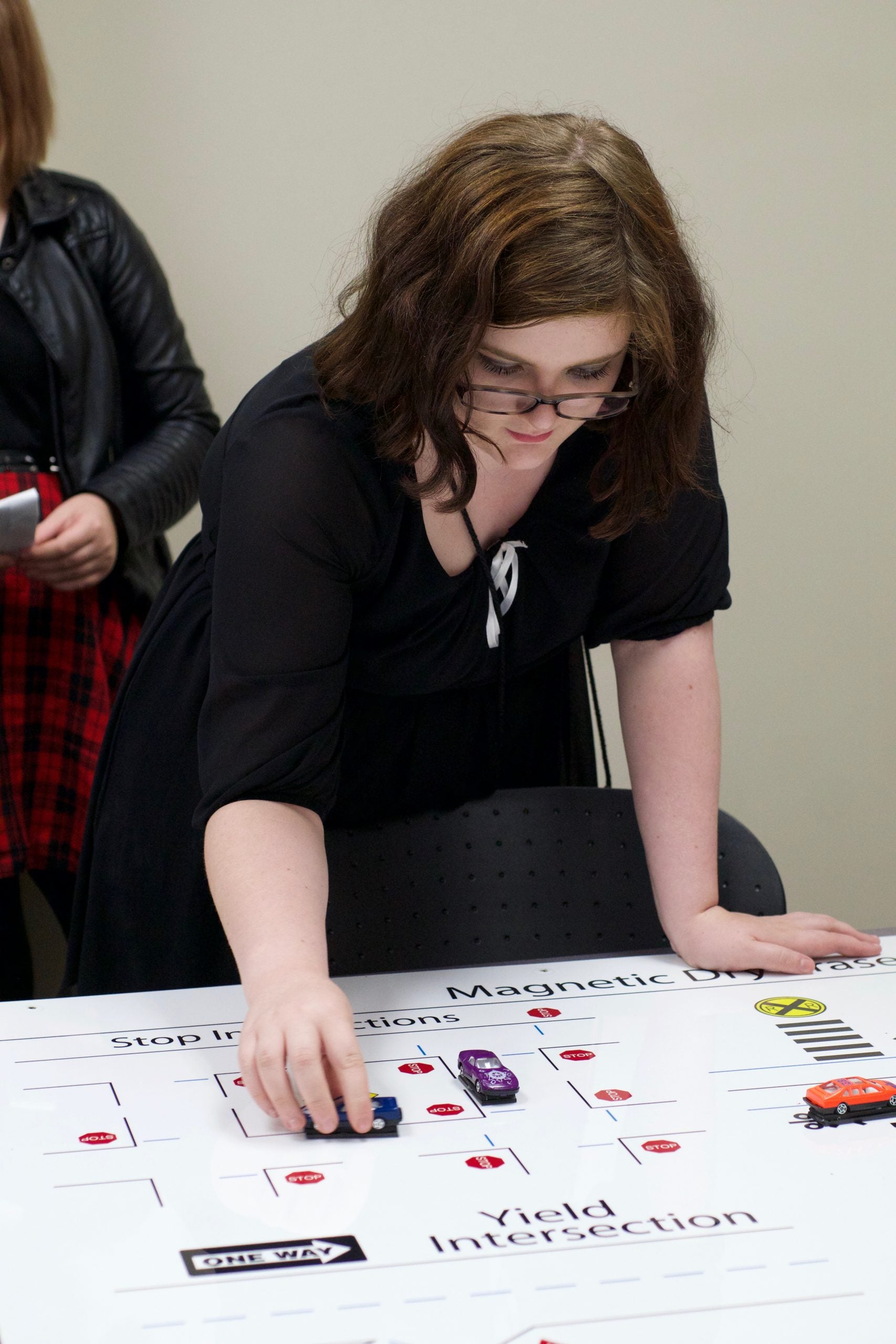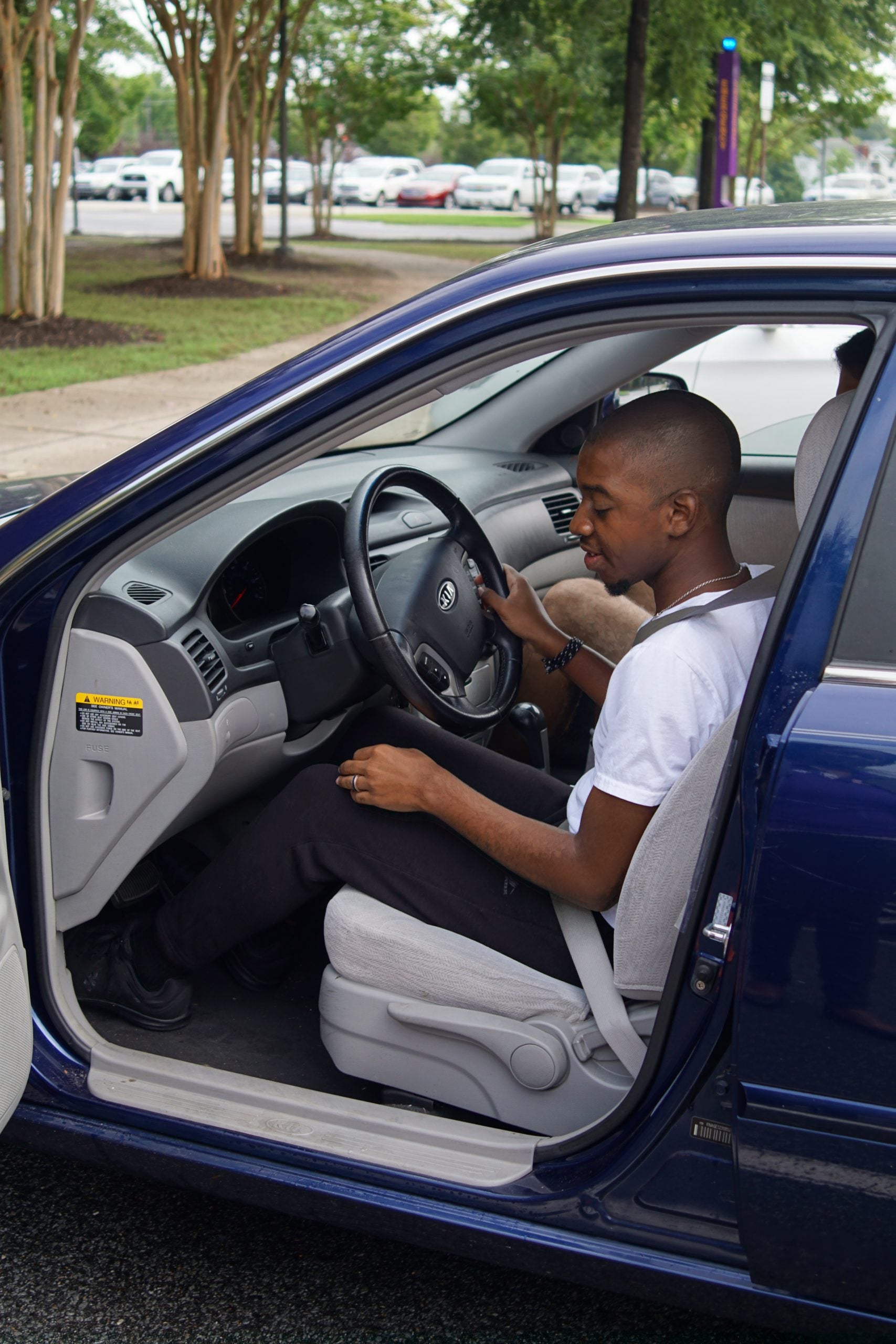Driving Bootcamp
The Driving and Community Mobility Bootcamp for teens and young adults with high-functioning autism spectrum disorder (HFASD) seeks to develop the functional skills needed to independently navigate within their communities.
In addition to building the foundational skills underlying driving through the use of interactive driving simulators and other interactive activities, the knowledge and skills to manage community mobility is incorporated into the weeklong Bootcamp.
Over five days, small group and individual sessions focus on topics such as:
- Learning to navigate by maps (paper and electronic)
- Understanding traffic signs and signals
- Learning the rules of the road
- Using the diverse instruments of the vehicle
- Role playing the experience of a law enforcement interaction
- Recognizing hazards and initiating the appropriate response
- Improving motor coordination and visual perceptual skills
- Addressing executive functioning through planning errands and/or trips and alternative community mobility skills
Why ASD?
Autism Spectrum Disorder (ASD) affects as many as 1 in every 68 children according to the Centers for Disease Control and Prevention (2014), making it one of the most common developmental disabilities in the United States. As a spectrum disorder, individuals with ASD have a wide range of characteristics with each person possessing individual strengths and challenges. Thus, it is important to have a teen/young adult with ASD – who wants to drive – individually evaluated so they can achieve this independent activity. Even if driving is not an option, community mobility can typically be achieved with the appropriate supports.
Driving and community mobility is important in enhancing one’s well-being and quality of life. Mobility allows for independence, increased participation, and greater access to the environment. The American Occupational Therapy Association (AOTA) recognizes the importance of providing driving and community mobility support as part of occupational therapy services (AOTA, 2014). However, of the adults with ASD, only approximately one-third of those individuals currently drive (Wade et al., 2017). Thus, the Bootcamp was developed to empower teens and young adults with ASD to develop their confidence and competence to drive and/or improve their self-mobility in their community.
The ECU Driving and Community Mobility Bootcamp was designed specifically for teens and young adults with ASD. The activities, specific learning objectives, and learning styles were developed to address many of the typical issues that are present in individuals with ASD. While the goal of the Bootcamp is to enhance safety and performance in the areas of driving and community mobility, we also want to address the social interactive issues that are common through group activities designed to develop relationships between participants and the occupational therapy students.
References:
American Occupational Therapy Association. (2014). Occupational therapy practice framework: Dormain and process (3rd ed.). American Journal of Occupational Therapy, 62, 625-683. http://dx.doi.org/10.5014/ajot.2014.682005
Wade, J., Weitlauf, A., Broderick, N., Swanson, A., Zhang, L., Bian, D…Sarkar, N. (2017). A pilot study assessing performance and visual attention of teenagers with ASD in a novel adaptive driving simulator. Journal of Autism and Developmental Disorders, 47(11), 3405-3417. doi: 10.1007/s10803-017-3261-7


